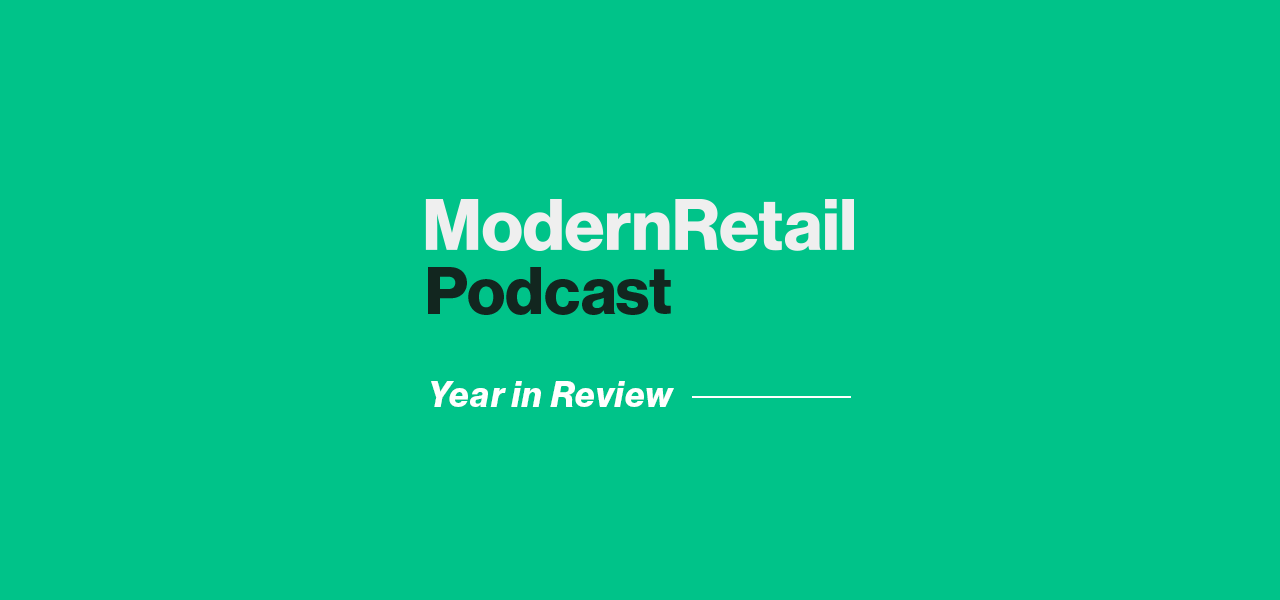Inflation, changing demand & major C-suite shuffles: The Modern Retail Podcast looks back at a volatile 2022

Subscribe: Apple Podcasts • Spotify
This year, brands and retailers faced a myriad of changes. Inflation went up, demand for some products went down and marketing became an increasingly difficult nut to crack.
This week on the Modern Retail Podcast, our reporters sat down and talked about the biggest themes they wrote about. They ran the gamut — from consumer demand shifts to price fluctuations to the difficulties many c-suites faced.
Senior reporter Melissa Daniels spoke about shifts in consumer sentiment that led to product and marketing changes. “There were some big shifts in what people were buying,” she said. For example, home goods were huge during the 2020 and 2021 but started to stagnate this last year.
This impacted even the biggest players, according to reporter Maria Monteros. Retailers like Target miscalculated demand early in 2022, and that hurt profits throughout the entire year. “I think they really expected that growth to continue,” she said. “And so they ordered a lot of these goods, only to find out that consumer spending has really shifted from discretionary items to travel and experiences.”
This is just a snippet of the wide-reaching conversation that covered all the ups and downs the retail industry faced this year.
Here are a few highlights from the conversation, which have been lightly edited for clarity.
Shopper changed where and how they spent money
Daniels: “It’s not that people are hoarding their cash right now because of inflation, they’re still spending money. They’re just spending it on different things. The fuel increases really ate up a lot of people’s cash. So when you start to look at the breakdown, and some of the Bureau of Labor statistics breakdowns of where people’s money are going those fuel increases that we saw in the summer and into the fall really started to change how people were spending. I think we also saw a big boom in people spending money in physical stores. A great example of this was the Thanksgiving holiday weekend… we saw a return to the in-person retail shopping that we saw before the pandemic. And I think that’s just because people are ready to get out of doors and look at physical goods again.”
Major C-suite shuffles
Monteros: “There were a lot of C-suite changes that happened. And I think this is partly due to some of the economic headwinds that these retailers are facing, such as excess inventory, supply chain issues, rising costs and whatnot. And these economic headwinds had really made it hard for these retailers to achieve the goals and the promises that they’ve made previously. So this year, for example, Old Navy CEO Nancy Green left the company in April, citing exactly those economic headwinds that I had mentioned. And one of the biggest C-suite changes [was] Mark Tritton [stepping down as CEO] from Bed Bath and Beyond. A lot of people had really expected him to make a big turnaround for the company, through his experience in private labels at Target. And he was really caught in bad timing.”
The rise of ‘shrinkflation’
Monteros: “One tactic that retailers have been using is widely called ‘shrinkflation’. And it’s the tactic that retailers use to improve their margins without raising prices. How a lot of retailers have been applying shrinkflation is by reducing their package sizes, without raising prices, of course. So a really popular example is Pepsi. They used to have this 32-ounce bottle of Gatorade. And they marketed it as, I believe, an easier-to-hold version… In reality, for the same, price consumers are getting a 24-ounce bottle instead of the 32 [ounce] ones.”
The rise of sustainable packaging
Daniels: “I think the packaging and back end of how a company processes and moves its products is an area where there’s a ton of advancement on the sustainability front. So we’re all used to having a ton of boxes in our homes, piling up in our recycling bins after our online shopping binges. Well, what if you didn’t have to do that? And there are a lot of startups and investors who want to tackle that space. The problem is consumers don’t know how to recycle. We’re already not great at recycling, partly because our systems don’t allow for it and partly because people sometimes don’t know what’s recyclable and what’s not. So if we’re going to introduce a new kind of reusable box — say, that you have to drop off at the mailbox to return or that someone is going to pick up on your doorstep — that’s a new consumer behavior that you have to introduce. So, a lot of these companies are experimenting with what they can get consumers to do and what’s the path of least resistance.”

